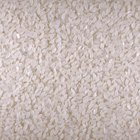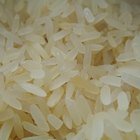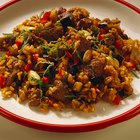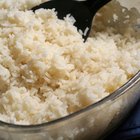
Baking with almond, rice or coconut flour can be a rewarding experience. Easier to digest than grain-based flours, almond and coconut flours are also lower in carbohydrates, higher in protein and higher in good fats. Rice flour is a wheat-free alternative best used in combination with a nut flour. Whether you have a child with a gluten intolerance, you follow a low-carb diet or you just want to make your family some grain-free treats for better health, these flours are a great place to start.
All About Almond Flour
Almond flour is full of healthy fats and proteins that other flours lack, but ensure that you're using almond flour, not almond meal. Almond flour is made from blanched almonds that have had the skins removed. Almond meal is made from ground almonds that still have skins. Almond flour is less dense than almond meal, making it the better choice for baking. It is highly versatile because of its mild flavor, but be sure to watch your baked goods carefully. Almond flour has a lower burn temperature than other flours, so set the cooking temperature about 25 degrees cooler than is recommended when substituting it for grain-based flours.
Build on Rice Flour
Bake with rice flour in combination with almond or other nut flours, because too much rice flour leaves your baked goods tasting a bit like cooked white rice. The flour can get gummy when used without a proper starch, so be sure to add cornstarch, arrowroot or tapioca to the recipe. Because of high levels of arsenic content in brown rice flour, use it sparingly. White rice flour is usually a better option when baking anyway, because its consistency is similar to that of all-purpose flour.
Ditch the Carbs with Coconut Flour
Coconut flour features a carbohydrate content of about 6 grams per 1/4 cup, as opposed to unbleached, all-purpose wheat flour, which weighs in at about 24 grams for the same amount. Coconut flour can be clumpy, though, so beat it thoroughly with the recipe’s other ingredients. Also, when using coconut flour, increase the amount of liquid and eggs in your recipe to keep the finished product moist and fluffy.
Times and Temps
Pay close attention to temperatures and cooking times when baking with almond, rice or coconut flour. If you are modifying a recipe, decrease the temperature by about 25 degrees and keep an eye on it. Nut flours contain more fiber than grain-based flours, so use them in small amounts at first to allow your family to get used to their effects on the digestive system. Although it will be tempting to cut into your baked goods – everyone loves a warm, gooey brownie – resist the urge. Cutting into your creation too soon will cause it to fall apart too easily. Almond, rice and coconut flour cookies, cakes and breads need cooling time to firm up before serving.
Related Articles
Baking With Almond, Rice & Coconut Flour

The Nutrition in Coconut Powder

What Would You Use Coconut Flour In?

How to Cook With Coconut Flour for Main ...

How to Bake Chicken With Almond Flour

What Is a Semibrown Rice Zojirushi?

How to Bake With Rice & Potato Flours

How Long Can I Store Uncooked Jasmine ...

Baking Muffins With White Rice Flour

High-Fiber, Low-Gas Foods

How to Cook Rice in Foil

Brown Basmati Rice Cooking Directions

How to Cook Rice in the Cuisinart Rice ...

Differences Between Steamed & Boiled ...

How to Make Sweet Brown Rice
Can I Grind Quinoa?

Proper Handling and Storage of Rice

How to Use Cocoa Powder in Place of ...
How to Use Unsweetened Applesauce in ...

How to Cook Rice in a Rice Cooker
References
Resources
Writer Bio
Meg Winkler began professionally writing in 2008. She has covered a variety of topics including fine wine, interiors, the arts, lifestyle and history. Winkler has been a luxury publications editor and music critic. She is an independent author and holds a Master of Arts from American Military University.
Photo Credits
Jupiterimages/Goodshoot/Getty Images